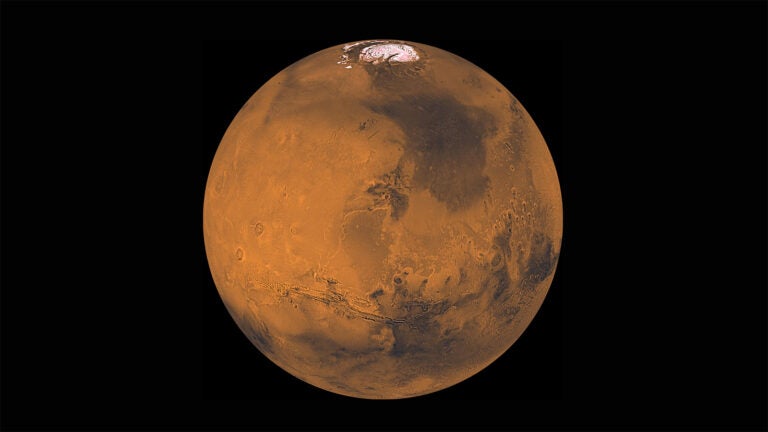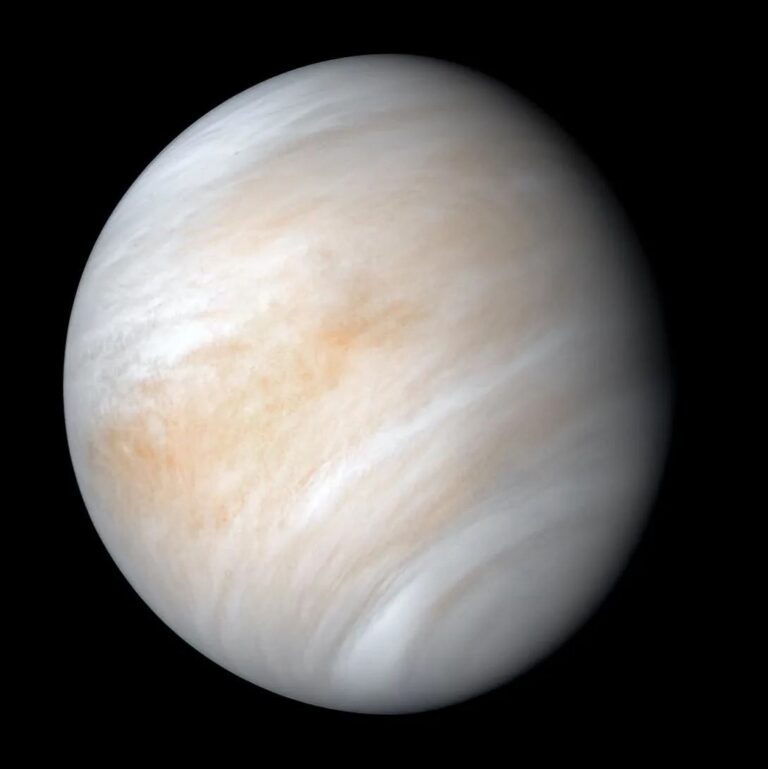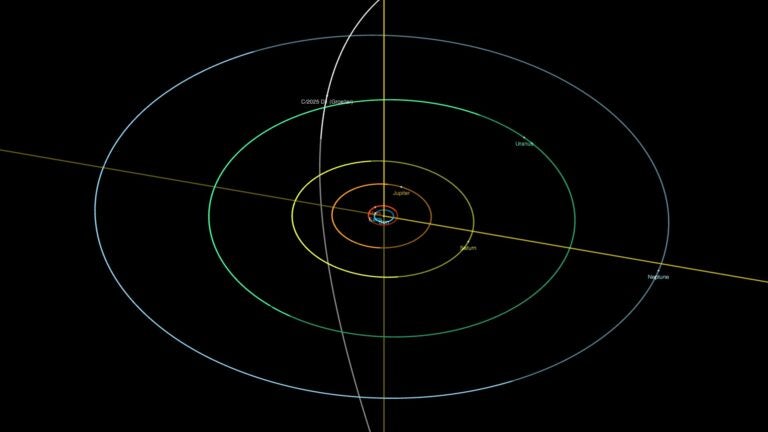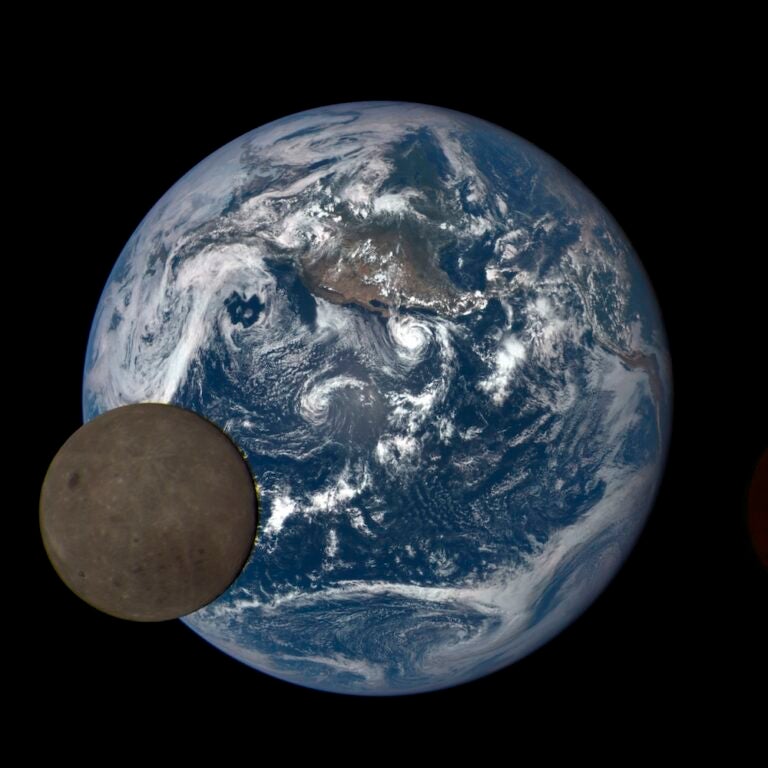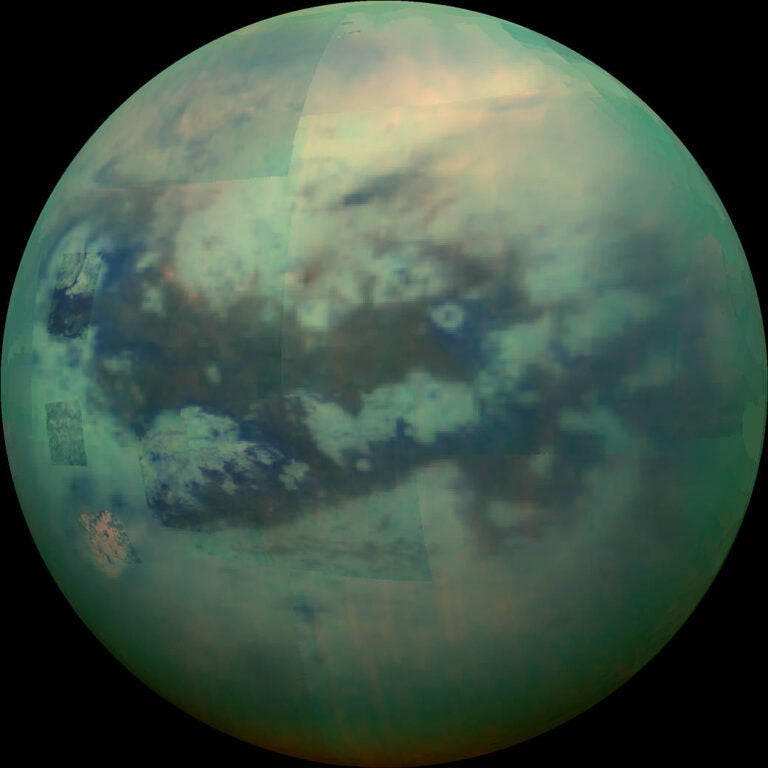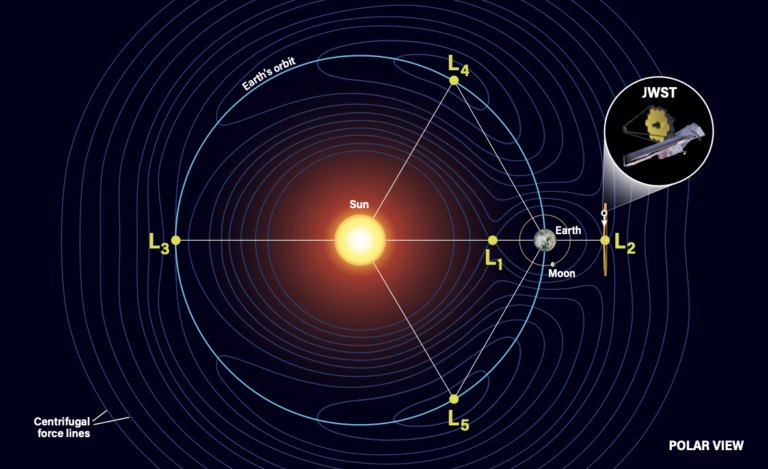
Over Mother’s Day weekend in May, skies as far south as Florida and Texas were filled with the vibrant colors of the aurora borealis. Some of the staff at Astronomy ventured out to score a rare view of the northern lights in southeastern Wisconsin. I traveled out to Wisconsin’s Kohler-Andrae State Park to experience the northern lights for the first time and capture them with my iPhone.
But the experience wasn’t just about the visuals. During our staff meeting the following week, my colleague Alison Klesman mentioned hearing birds at around 3 a.m. Some of her friends also heard them, too, while out aurora hunting.
The idea of auroral soundscapes sparked my curiosity. I wondered if the birds were active because of the light of the aurorae. But it was also peak migration season — could that be it instead?
I reached out to Bryan Pijanowski, a soundscape ecologist at Purdue University who specializes in collecting the sounds of nature. In an email, I asked him if aurorae could trigger birdsong or if he knew anything about this phenomenon happening.
“I know of no studies that report on this. … I’m sure there could be a link between the amount of light and a trigger for singing by birds,” Pijanowski replied in an email. “I think there are also reports that these phenomena create sounds in the atmosphere.”
No dice. But my level of intrigue was growing.
I looked for videos on YouTube about aurorae and their sound. There, I found a 2011 presentation from British astrophysicist Carolin Crawford titled “The Sounds of the Universe.” In her talk, she mentioned that sometimes, aurorae on Earth emit radio waves that, when converted to sound, resemble a dawn chorus of chirping birds.
So, I reached out to Crawford. She explained that this was a passion project and that she had no expertise in the subject. But she said that she knows there are reports of hissing or crackling that can be heard from the aurorae — no radio-wave conversion required. But it’s implausible that aurorae themselves could generate these sounds. At the high altitudes where they occur, the atmosphere is too thin to transport sound waves audible to our ears.
Crawford also said this: “However, the lights occur during times of intense magnetic activity, and moving magnetic fields can generate electric currents. One speculative possibility is that these could be picked up locally to the observer through nearby metal (through a barbed wire fence or such) and broadcast like a radio signal. However, you may want to read this article, which provides an interesting hypothesis.”
The article she linked to mentioned Unto Laine’s work with the Aurora Acoustics Project. This project has been around since 2000. Laine — an acoustics researcher and professor emeritus at Aalto University in Finland — hypothesized that the sounds heard during an aurora could actually be coming from a layer of warm air around 250 feet (75 meters) above the ground. Laine has recorded these sounds in Finland with makeshift equipment and published multiple papers on the subject. The Von Hertzen Brothers, a folk-rock band from Finland, even mixed some of these sounds into their song “Northern Lights.” The sounds are small whispers of clashes and crashes or crackles.
Jackpot. I contacted Laine and found a world of sound.
Sounds of the aurora
Unto Laine has focused on solving the mystery behind the haunting sounds that have accompanied the northern lights in his childhood memories. One evening in November of 1990, after attending a jazz festival in northern Finland, Laine and a group of friends went out to observe the aurorae. They stood in a courtyard square between some small cabins in the frigid cold; it was –31 degrees Fahrenheit (–35 degrees Celsius).
Laine told me on a phone call that he and his friends, sitting quietly, did hear strange sounds. The noises grabbed his interest and he contacted the Sodankylä Geophysical Observatory (SGO), located 75 miles (120 kilometers) north of the Arctic Circle in Finland, to see if they knew anything about sounds caused by aurorae. From there, the Aurora Acoustics Project was formed in 1999, a collaboration between SGO and the Helsinki University of Technology.
By investigating auroral sounds, Laine and his colleagues have been seeking to explain a phenomenon that has long been known and relayed in the folklore of Indigenous peoples living under regular displays. From the Sámi peoples of Finland, Norway, and Sweden and the Inuit and Tlingit tribes of North America to Aboriginal people under the aurora australis, reports consistently describe strong auroral storms accompanied by faint rustling or snapping sounds.
But a physical explanation for these sounds has long eluded scientists — if they thought they even existed at all. The 19th-century naturalist Alexander von Homboldt, citing numerous reports of silence from polar explorers, wrote in his book Cosmos that auroral noise “is now rendered extremely doubtful, since the testimony of the Greenland sledgers, and the Siberian fox-hunters, is no longer taken unconditionally. The northern lights have become more silent since they have been examined more carefully with the eye and the ear.”
Laine’s work may be reversing that trend. For almost three decades now, Laine and his colleagues have been searching for these faint sounds of the aurora over Finland. They have recorded small crashes, whispers or hisses, and echoes of crackling or pops. For the first few recordings, he used a sensitive microphone with a dome-shaped reflector and a receiver to pick up very low-frequency sounds. He has continued to collect data on auroral-related sounds every time there was a geomagnetic storm.
Capturing the faint sounds requires patience. Aurorae are strongly dependent on weather — both on Earth and in space. The latter category is heavily influenced by the solar cycle, in which the Sun’s flares and eruptions ramp up and then recede over the course of 11 years.
The strong geomagnetic storm that struck Earth in May — near the peak of the Sun’s current solar cycle — was a boon. On the nights of May 10/11 and May 11/12 of this year, Laine was able to record auroral sounds, including a rare type that is mainly heard during powerful geomagnetic storms. He says he last heard this type of noise on April 11/12, 2001, when the Sun pummeled Earth with a substantial coronal mass ejection. “It is a special type of sound that resembles a sound produced by hitting an empty oil barrel with some hard object,” Laine says. He plans on publishing an analysis of these recordings soon.
The source of auroral sounds
Laine and his collaborators think the sounds are being generated from discharges of electricity occurring low in the atmosphere. In 2012, the team reported that they had managed to triangulate these sounds, using multiple microphones, as occurring at about 230 feet above the ground (70 m). In their theory, the discharges are corona discharges, a phenomenon that occurs when an electrical voltage is so high that charge leaks into the surrounding air, even though air normally isn’t a conductor. Corona discharge can often be seen on high-voltage power lines — and heard as a buzzing or hissing noise.
As for why these sounds occur at this altitude, Laine thinks they are emanating from a low-altitude atmospheric inversion layer. Inversion layers are an atmospheric condition where a layer of warm air sits on top of cooler air beneath it. When an inversion forms, the cool air under the inversion becomes trapped and can’t ascend through the warmer air above it. This is the inverse of the general trend in the atmosphere, where the higher you go, the colder it gets. But inversions happen frequently at night, when the ground cools more quickly than the air.
Related: Scientists just cleared up a mystery about aurorae
Laine thinks that in the evening, warm air rising from the cooling ground carries negative ions aloft. At the same time, during a geomagnetic storm, positive ions fall into the atmosphere from altitudes of around 60 miles (100 kilometers). These opposing charges then accumulate at the inversion layer, building up like static electricity in your clothes. The resulting electrical discharge generates the crackling or crashing sounds.
This means that the bright lights of the aurorae that we see aren’t directly creating the sound. The aurorae and the sounds that can be heard are simultaneous phenomena, says Laine, driven by gusts in the solar wind — the stream of charged particles emitted by the Sun. “More dense solar wind waves will brighten and move the visible aurora,” says Laine. “At the same time, the magnetic field is changed, and triggers the electric discharges.”
Laine captured the data for this explanation in Fiskars during a spectacular northern lights show in 2013. Laine later presented these results in 2016 at the Baltic-Nordic Acoustic Meeting in Stockholm, Sweden.
Have auroral sounds been studied before?
Different sounds like the pops, crackles, hissing, or claps and clashes depend on weather conditions and the strength of a geomagnetic storm. Laine says the best condition is dry air with low temperatures or a very still, clear night. These conditions give the inversion layer a chance to charge up and produce sound. The auroral music can reach a sound pressure level (SPL) of 60 decibels (dB) from the ground — similar to the hum of an air conditioner. At their source within the inversion layer, Laine estimates they would be even louder — around 90 to 100 dB, more like a lawn mower.
The reaction from space physicists to Laine’s work remains somewhat circumspect. When I reached out to researchers for an independent comment for this story, multiple space physicists said it was hard for them to evaluate Laine’s hypothesis. In part, some said, this was because of the gulf between Laine’s field — acoustics — and the field of geophysics.
“I am aware of it, but it has not been published in an interdisciplinary way, so it is quite difficult for me to judge,” Elizabeth MacDonald, a space physicist at NASA’s Goddard Space Flight Center in Green Belt, Maryland, wrote in an email. “If there were co-authors from the space physics field, or it was published in a peer-reviewed space physics journal, I would be better able to evaluate it for you.”
I asked Noora Partamies, a middle-atmosphere physicist at the University Centre in Svalbard, Norway , whether Laine’s research was outside the mainstream of space physics. “That is one of the first things Unto writes in his conclusions, that most geophysicists say the sounds are an illusion,” she replied. “There are not many people looking into the sounds related to the aurora. So this is not a mainstream thing.”
Allison Jaynes, an astrophysicist at the University of Iowa who specializes in studying aurorae, has heard of other people who have captured auroral sounds. But she suspects the inversion layer is not the source. “The sounds that I have recordings of seem to have been created from a long, metal wire fence like a livestock fence,” she wrote in an email. When current flows through a wire, it can cause it to vibrate and generate a sound; examples include the hum of electrical transformers and fluorescent lights. The shifting magnetic fields associated with the appearance of aurora induce currents in wires — this is what can overload electrical grids. Jaynes thinks that “the fence might have served as a wire conductor to create a sound like humming or buzzing.” (Laine is skeptical of this hypothesis and says he and his team have been able to remove environmental noises.) Still, she thinks Laine’s hypothesis merits further investigation. “I think this is one [possible cause for sounds of the aurora] that should be explored,” she said. “So at this point, it’s sort of in the early stages of a possible explanation for the sounds of the aurora that people have reported for a very long time.”
Frosty reception
Laine also thinks that aurorae may not be the only events making noise in the inversion layer. On May 24, Laine presented new findings at the 2024 Baltic-Nordic Acoustic Meeting investigating pops and cracks that researchers have previously thought were associated with frost. When water seeps into trees or buildings, frost events can freeze the water, causing it to expand and generate cracking sounds from tree bark or building facades.
Laine began looking into the sounds of frost cracklings as well when collaborators at the Sodankylä Geophysical Observatory recorded these sounds. The frost cracklings sounded similar to those of auroral sounds.
But the frost-cracking sounds that Laine recorded were instead being produced in the sky about 230 to 390 feet (70 to 120 m) from the ground — around the same altitude the auroral sounds are heard. Laine hypothesizes that these sounds might be produced in the inversion layer too.
Previously, says Laine, some researchers had thought that the auroral sounds he had captured on cold nights were actually sounds of frost; now, Laine sees them as related phenomena. “Now they give a proof for the auroral sounds, not against them,” says Laine. He also notes that he has recorded auroral sounds in temperatures well above freezing — as warm as 46 F (8 C), when frost was not present.
Laine plans on further studying whether these frostlike sounds are connected to geomagnetic conditions. “If they are connected, it tells that the inversion layer is very sensitive to small geomagnetic disturbances under optimal weather conditions,” says Laine in an email. “If they are NOT connected, then the inversion layer may produce sound spontaneously under optimal weather conditions.”
Aiming higher
After decades of investigating auroral sounds in the inversion layer, Laine is still looking to push his research further. Currently, he’s working with an architect to construct a glass tower attached to his 77-year-old wooden house to continue capturing the sounds of aurorae. The blueprints are drawn up, and Laine received the necessary permits to construct it — on his dime.
The plans call for the tower to ascend 39 to 49 feet (12 to 15 m) from Laine’s garden. At the top will be a perch in the shape of a half-ball that will open up for visual observations of aurorae, sunspots, and meteors.
The tower will allow Laine to bring his microphones and instruments higher in the atmosphere to better capture the elusive sounds of the northern lights. Laine says he might even capture the sounds of meteors, which he thinks may also produce noise in inversion layers.
“I have many different plans and ideas,” says Laine. “I am sure, I will need this tower to [make] many measurements [of which kind] I even do not know yet.”

